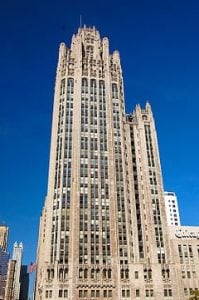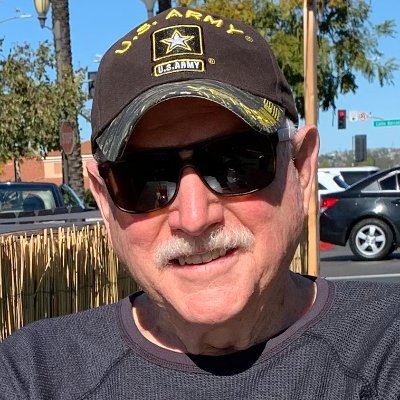I posted the following commentary in 2018 when the Chicago Tribune moved out of Tribune Tower and into the One Prudential Plaza building a few blocks south of the Chicago River. I wasn’t there for the move, but it was nevertheless dispiriting and disheartening for me because in that building is where I cut my journalistic teeth. Why am I reposting this piece? I don’t know. Maybe it is because I recently heard from an old Tribune colleague and suddenly felt a wave of nostalgia for the old place. In any case, I hope you enjoy this look back at an iconic newspaper and the building in which it was once located.
Last week, the Chicago Tribune moved, or should I say, vacated, the iconic Gothic landmark at 435 N. Michigan Avenue, known since 1925 as “Tribune Tower.”
I am one of an ever-dwindling cadre of former Chicago Tribune reporters, photographers, and editors who actually toiled in the “old” Tribune newsroom. I joined the paper in 1969 right out of the University of Kansas, and when I walked into the yawning fourth-floor newsroom on my first day, I have to admit I was (input an appropriate adjective here) overwhelmed, stupefied, staggered, dumbfounded, flummoxed.
The place was humungous. It was also louder than the “clatter wheels of hell,” as my grandpa used to say. Of course, I didn’t start my life at the Tribune in that vast cavity. No, not by a long shot. Instead, I was assigned, as were all rookie reporters in those days, to something called “Neighborhood News” off in a much quieter and less imposing area of the tower.
But nine months later, after I proved that I could write intelligible and accurate stories about the lesser regions of the Chicago Metropolitan area, I was hurled into the reportorial breach and found myself ensconced at an ancient battleship gray wooden desk that was shared by several reporters.
In those days, new general assignment reporters “hot desked it,” meaning you sat at a vacant desk as long as some old-timer sporting a fedora and smoking a big stogie didn’t tell you to move. (Yes, boys and girls, back then, the Tribune City Room was saturated with cigarette and cigar smoke. And sometimes, the drawers on those old wooden desks contained half-full bottles of Old Grandad or Wild Turkey. Ah, yes, it was a very different time).
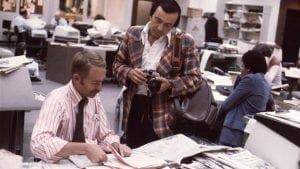
But I digress. In front of me on that scuffed and gouged wooden desk sat a big black Underwood typewriter. I was sure the damned thing was daring me to write something on it.
I could almost hear it saying, “Go ahead, ya big Kansas hick. Write somethin.’ I dare ya!”
I’m sure I gulped several times, watching the turbulent activity in front of me with reporters running in and out of the newsroom amid a discordant symphony of ringing telephones.
I wondered how long before I would be one of those reporters. My heart pounded. My palms sweated. My mouth dried.
I didn’t have to wait long. From about thirty feet across the room, I heard somebody shouting my name.
“Yates, Yates,” the voice said.
I jumped to attention, just like I did on my first day of basic training in the U.S. Army, when a rock-solid staff sergeant with a tan campaign hat covering his square, close-cropped head called my name.
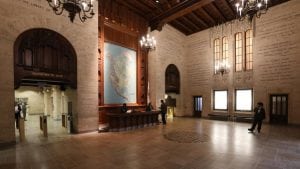
Only this voice didn’t come from my drill sergeant. It emanated from a bespectacled man in shirtsleeves sitting in the driver’s seat of the Tribune’s horseshoe-shaped City Desk. He was flanked on both sides by a squad of rewrite men (not many women back then), a photo assignment editor and a bank of squawking radios blaring raspy police and fire department calls. A couple of the grizzled rewrite men even wore (you guessed it!) green eye shades.
The man impatiently calling my name was the Chicago Tribune’s Day City Editor. His name was Don Agrella.
I looked over at him just in time to hear him say. “Yates, take an obit.” I looked down at the black telephone on my desk just as it started ringing.
“An obit?” I found myself thinking. “Geez, what a start!”
“Hello,” the voice on the other end said, “this is Weinstein’s Funeral Home on West Devon. Are you ready?”
That was my introduction to the Chicago Tribune’s city room and Don Agrella, a man I wrote about a few years back and who I called “a City Editor Extraordinaire.”
There is no way I could begin to talk about the Chicago Tribune abandoning Tribune Tower without talking about the man who, in my mind, will always personify it.
Here is that piece. I hope you enjoy it. It’s a look back at a much different era in newspaper history.
————————————————————————————————————————————————
OK, right off the bat, I will tell you Don Agrella would have yelled at me if I ever called him City Editor “Extraordinaire.”
But the fact is, Agrella, who passed away at 92 in 2011, was an extraordinary Day City Editor and newsman. For about five years, he was my boss at the Chicago Tribune. Between 1969 and 1974, I worked for him as a general assignment reporter, rewriteman, and assistant city editor. During those five years, he provided me with a newspaper education that doesn’t exist anymore.
Agrella’s trademark in the newsroom was to assign reporters to stories by yelling: “Hat and Coat!” as in, “Yates, hat and coat!”
Never mind that few other reporters my age or I ever wore a hat in the early 1970s.
That would be my signal to trot over to the Tribune’s gray U-shaped wooden city desk where Agrella would issue my marching orders: “Go cover this (fill in the blank) speech, fire, trial, meeting, press conference, etc., and let me know if it’s worth anything.”
Only once during my budding career as a general assignment reporter for the Tribune did I dare return and declare: “It wasn’t worth a story.”
“Is that right?” Agrella replied. “Well then, why in the hell does the Sun-Times have a story, and what about this City News copy I am holding?”
All I could do is gulp. “Sorry,” I said. “I didn’t think it was worth a story.”
“In the future, you go cover the story, call me, and I’ll decide if it’s worth anything,” he told me. “That way, you won’t have to apologize anymore.”
Then, noticing that my 6’4″ frame seemed to be sinking into the newsroom floor, he took pity on me.
“Look, it’s my job to decide if something is worth a story. It’s your job to report. OK? Let me do my job.”
Then he smiled. “Now go and write me a 4-head.” (A 4-head was a short, 3-paragraph story that usually wound up somewhere in the back of the paper).
I went back to my desk and wrote what was (in my mind at least) the best 4-head story Agrella had ever seen.
The Tribune newsroom in those days was alive with sound. No cubicles. No cell phones. No computers. No carpeted floors. Just lots of noise—as in the clacking of typewriters, telephones ringing off their hooks, editors yelling at reporters, and reporters yelling “copy” at copy boys (and girls). In those days, yelling “copy” didn’t mean going to the copy machine and making a copy. It meant: “Get over here and pick up this story I just finished and distribute it to all the relevant editors.”
Back then, we wrote on 10-page thick “books” that were cranked through typewriters. You had to pummel the keys so that the carbon paper in between those ten pages could produce nine legible yellow copies of your story that could then be distributed to and read by the plethora of relevant editors scattered throughout the newsroom.
Forty-eight years ago, newsrooms were studies in semi-controlled mayhem. How anybody ever worked in them, let alone wrote anything of quality, baffles me today. But, the work we did and the stories produced were often damned good ones too.
Don Agrella saw to that. He was a tough taskmaster. He did not suffer fools, nor did he tolerate sloppy reporting.
“You sure about this, Yates?” he once asked about an exclusive story I had just put in front of him.
“I am,” I replied.
“Would you bet your mother’s life on it?”
“I would,” I said with nary a hesitation.
“OK,” he replied. “But don’t forget, you only have one mother, but there are a million stories out there.”
I have to admit, that gave me pause. But on I soldiered. “Damn it, Don, it’s a good story.”
“I didn’t say it wasn’t good…but is it accurate?” he demanded.
Accuracy was at the top of Don Agrella’s list of reportorial essentials. He might accept a poorly written story (he could always have a rewrite man or woman rework it), but God forbid that it be inaccurate.
And one thing you learned early on in dealing with Don Agrella: you never lied to him. Don wanted to trust his reporters, and if he couldn’t take you at your word, you were on bad paper with him. I witnessed a few reporters fall into that trap, and few, if any, ever climbed out of it and into Don’s good graces again.
Between 1973 and 1974, I became a City Editor myself. I was the weekend version of Don Agrella, assigning reporters to stories on Saturday and Sunday and putting together a local report. I am sure I could never have done that job had I not had the experience of watching Don Agrella at work.
In 1974, I was promoted to Foreign Correspondent and went off to Asia. I never worked for Don Agrella again.
But one day in 1975, when I returned to Chicago for a few days after covering the fall of Saigon in April of that year, Don grabbed me and took me aside.
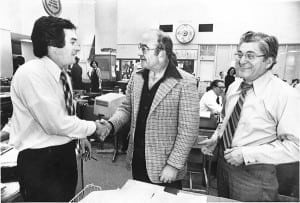
“You did a great job covering Vietnam,” he told me. “And just so you know, the Sun-Times never had a story you didn’t have. It looks like you learned something in my city room, after all, Yates.”
A few years later, while I was based in Los Angeles for the Tribune, I met with actor Ed Asner, who at the time was playing the part of Lou Grant, City Editor of the fictional Los Angeles Tribune. It was 1978, and Lou Grant was one of the top TV shows in America.
Asner asked me if I thought his portrayal of a tough city editor was accurate. I told him he should go to Chicago and watch Don Agrella at work. He actually did do that, and one day, when Don wasn’t expecting it, Asner walked into the Tribune city room and yelled, “Agrella, Hat and Coat!”
I wish I could have seen that. I’m sure Don thought it was a hoot.
When Don retired from the Tribune in 1979, it was unquestionably the end of an era. He was an old-school newspaperman leaving at a time when the business was on the verge of changing in ways that made many veteran hacks like me sad.
Once in the 1990s, a bunch of us Agrella disciples gathered for lunch at Ricardo’s (once a classic hangout for Chicago news people). Don was in town from Florida, where he had retired. I had just returned to Chicago from Tokyo, where, for the past seven years, I had been the paper’s Chief Asia Correspondent and Tokyo bureau chief.
“Well, Don,” I asked. “Are you ready to come back to the Tribune city room?”
“What city room?” he replied. “The place looks like an insurance office. I couldn’t work there. There’s no noise.”
I realize today that I was one of the lucky ones. I got to work in a REAL big city newspaper newsroom with its clamor and clatter and its palpable turmoil and tension. I can still recall the muffled grumble and shuddering of the newsroom floor when the vast banks of old presses started six levels below.
When the Tribune’s presses began to roll, it was the high point of the day because on those presses was the culmination of a day’s hard work by a legion of highly dedicated and talented people.
Yes, I was one of the lucky ones. Not only did I get to work in a noisy, dynamic newsroom, but I also got to work for Don Agrella, a City Editor who was, without a doubt, indeed “Extraordinaire.”
(Click on the link below to view a video in which a few of today’s Tribune staffers share memories of working in Tribune Tower. Sadly, few, if any, of the zany characters that made working in the old pre-computer newsroom an unforgettable experience are around to share their memories.)
–30–
If you enjoyed this post, please consider subscribing to ForeignCorrespondent and tell your friends to subscribe. IT’S FREE! WHAT A DEAL! If you’ve received this from a friend and would like to be added to our distribution list for future blog posts, please enter your email address in the sign-up for notifications box at https://ronaldyatesbooks.com/category/foreign-correspondent.
You can also find my commentaries on Substack at https://ronyates.substack.com/ and the American Free News Network at https://afnn.us.
Please feel free to comment. WE LOVE COMMENTS!

